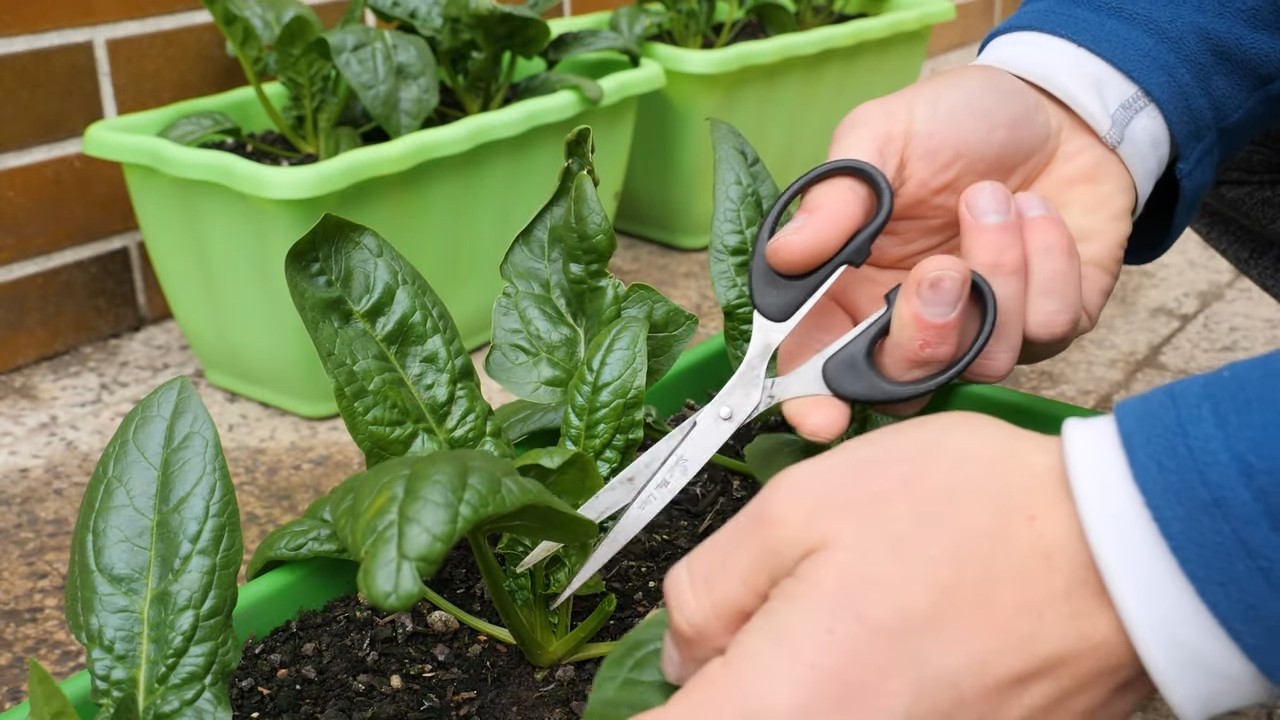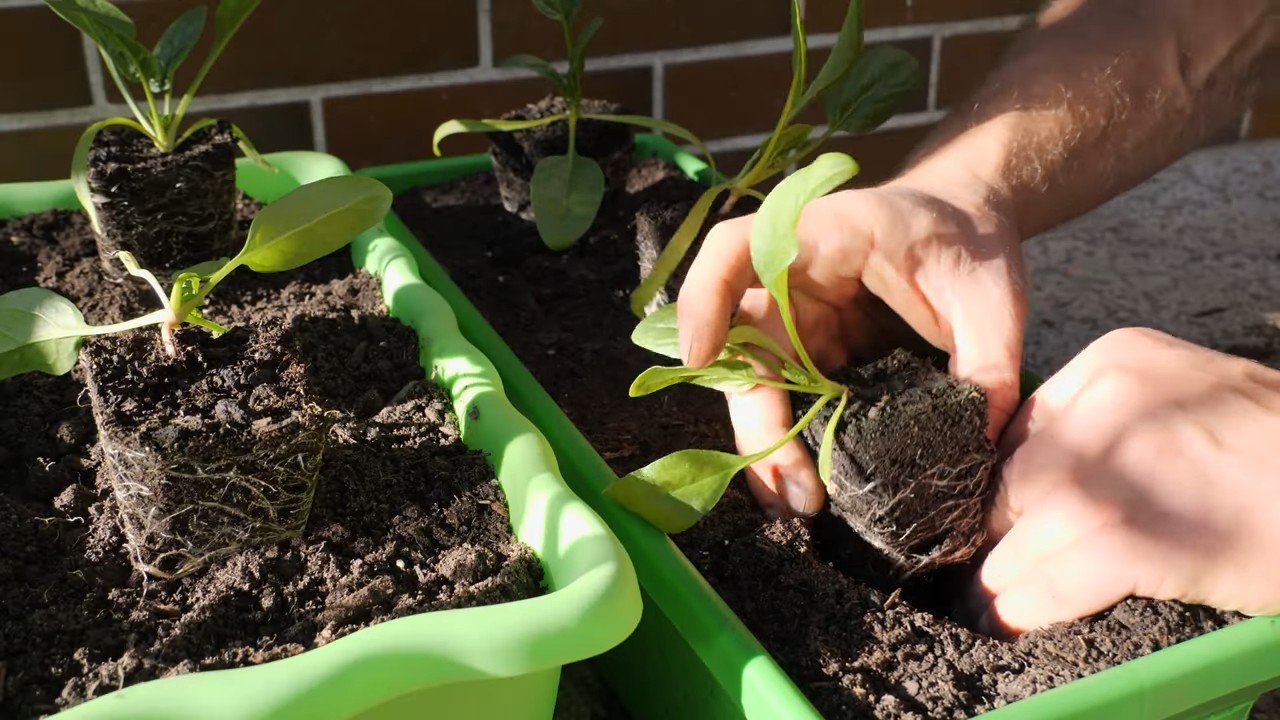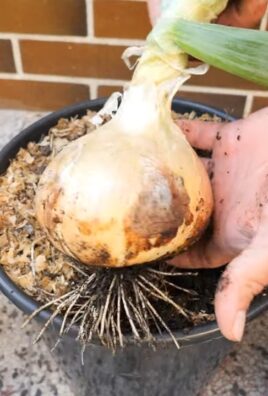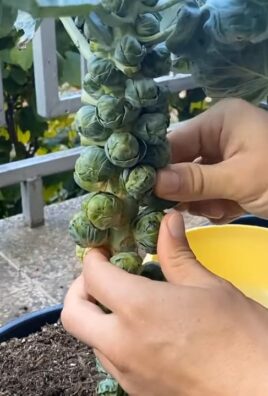Indoor spinach growing might sound like a challenge, especially if you’re used to sprawling gardens under the open sky. But trust me, bringing the goodness of fresh, leafy spinach indoors is not only possible, it’s incredibly rewarding! Imagine having a constant supply of nutrient-packed greens right at your fingertips, ready to be tossed into salads, smoothies, or sautéed for a quick and healthy side dish.
For centuries, humans have cultivated plants indoors, from the elaborate orangeries of European royalty to the humble windowsill herb gardens of today. This connection to nurturing life, even within the confines of our homes, is deeply ingrained in our history. But beyond the historical charm, why should *you* consider indoor spinach growing? Well, think about it: no more battling unpredictable weather, pesky garden pests, or limited growing seasons! You’re in complete control of the environment, ensuring a consistent harvest of delicious, vibrant spinach all year round.
This DIY guide is your key to unlocking the secrets of successful indoor spinach cultivation. We’ll walk you through everything from choosing the right containers and soil to mastering the art of lighting and watering. Get ready to transform your living space into a thriving, edible oasis – one spinach leaf at a time!

Growing Spinach Indoors: A Beginner’s Guide
Hey there, fellow plant enthusiasts! Ever dreamt of having fresh, vibrant spinach right at your fingertips, no matter the season? Well, you’re in luck! Growing spinach indoors is totally achievable, even if you don’t have a green thumb (yet!). I’m going to walk you through everything you need to know to cultivate your own little spinach oasis inside your home. Let’s get started!
What You’ll Need
Before we dive into the nitty-gritty, let’s gather our supplies. Here’s a checklist of everything you’ll need to successfully grow spinach indoors:
* Spinach Seeds: Choose a variety that’s well-suited for indoor growing. Some popular choices include ‘Bloomsdale Long Standing’, ‘Baby’s Leaf Hybrid’, and ‘Tyee’.
* Containers: You’ll need containers with drainage holes. I recommend using pots that are at least 6 inches deep and wide. You can use individual pots or a larger container to grow multiple plants.
* Potting Mix: Use a high-quality, well-draining potting mix. Avoid using garden soil, as it can compact and not provide adequate drainage.
* Grow Lights: Spinach needs plenty of light to thrive. If you don’t have a sunny windowsill, you’ll need to invest in grow lights. Fluorescent or LED grow lights work well.
* Watering Can or Spray Bottle: For watering your spinach plants.
* Fertilizer: A balanced liquid fertilizer will help your spinach plants grow strong and healthy.
* Seed Starting Tray (Optional): If you prefer to start your seeds indoors before transplanting them.
* Spray Bottle with Water: For misting the seedlings.
* Thermometer: To monitor the temperature of your growing area.
Getting Started: Planting Your Spinach Seeds
Okay, now that we have all our supplies, let’s get those seeds in the soil!
1. Prepare Your Containers: Fill your containers with potting mix, leaving about an inch of space at the top. Gently pat down the soil.
2. Sow the Seeds: Sprinkle the spinach seeds evenly over the surface of the soil. Aim for about 2-3 seeds per inch.
3. Cover the Seeds: Lightly cover the seeds with about 1/4 inch of potting mix.
4. Water Gently: Water the soil gently using a watering can or spray bottle. You want to moisten the soil without disturbing the seeds.
5. Provide Warmth: Spinach seeds germinate best in temperatures between 60-70°F (15-21°C). Place your containers in a warm location or use a heat mat to speed up germination.
6. Cover with Plastic Wrap (Optional): To help retain moisture, you can cover the containers with plastic wrap. Be sure to remove the plastic wrap once the seedlings emerge.
Nurturing Your Spinach: Light, Water, and Fertilizer
Once your spinach seedlings emerge, it’s time to provide them with the care they need to flourish.
1. Provide Adequate Light: Spinach needs at least 6 hours of direct sunlight per day. If you don’t have a sunny windowsill, use grow lights. Position the grow lights about 6-12 inches above the plants. I usually keep mine on for about 14-16 hours a day.
2. Water Regularly: Keep the soil consistently moist, but not soggy. Water when the top inch of soil feels dry to the touch. Avoid overwatering, as this can lead to root rot. I usually water every 2-3 days, but it depends on the humidity and temperature in my home.
3. Fertilize Sparingly: Feed your spinach plants with a balanced liquid fertilizer every 2-3 weeks. Follow the instructions on the fertilizer label. Be careful not to over-fertilize, as this can burn the plants.
4. Thin Seedlings (If Necessary): If you planted your seeds closely together, you may need to thin the seedlings once they have a few true leaves. Remove the weaker seedlings to give the remaining plants more space to grow. I usually aim for about 2-3 inches between plants.
5. Maintain Proper Temperature: Spinach prefers cooler temperatures, ideally between 60-70°F (15-21°C). Avoid placing your plants near heat sources or in areas that get too hot.
6. Ensure Good Air Circulation: Good air circulation helps prevent fungal diseases. You can improve air circulation by placing a small fan near your plants.
Dealing with Pests and Diseases
While spinach is relatively easy to grow, it can be susceptible to certain pests and diseases. Here’s what to watch out for and how to deal with them:
* Aphids: These tiny, sap-sucking insects can weaken your spinach plants. You can control aphids by spraying them with a strong stream of water or by using insecticidal soap.
* Spider Mites: These tiny pests can cause yellowing and stippling on the leaves. You can control spider mites by increasing humidity and spraying the plants with insecticidal soap.
* Downy Mildew: This fungal disease can cause yellow spots on the leaves. You can prevent downy mildew by providing good air circulation and avoiding overwatering. If you see signs of downy mildew, remove the affected leaves and spray the plants with a fungicide.
* Leaf Miners: These insects burrow inside the leaves, leaving trails behind. You can control leaf miners by removing the affected leaves and using insecticidal soap.
Harvesting Your Spinach
The best part of growing spinach indoors is, of course, harvesting your own fresh greens!
1. When to Harvest: You can start harvesting spinach leaves when they are about 4-6 inches long.
2. How to Harvest: Use scissors or a knife to cut the outer leaves, leaving the inner leaves to continue growing. This is known as “cut and come again” harvesting.
3. Harvest Regularly: Harvesting regularly encourages the plants to produce more leaves.
4. Enjoy Your Harvest: Wash the spinach leaves thoroughly and enjoy them in salads, smoothies, or cooked dishes.
Troubleshooting Tips
Sometimes, things don’t go exactly as planned. Here are some common problems you might encounter when growing spinach indoors and how to fix them:
* Yellowing Leaves: This can be caused by overwatering, underwatering, nutrient deficiencies, or pests. Check the soil moisture, fertilize if necessary, and inspect the plants for pests.
* Leggy Growth: This is usually caused by insufficient light. Move your plants to a sunnier location or provide more light with grow lights.
* Slow Growth: This can be caused by cool temperatures, nutrient deficiencies, or poor soil. Ensure the temperature is within the ideal range, fertilize if necessary, and use a high-quality potting mix.
* Bolting: Bolting is when the plant starts to produce flowers and seeds, which can make the leaves bitter. This is usually caused by hot temperatures or long days. To prevent bolting, keep the temperature cool and provide shade during the hottest part of the day.
Choosing the Right Spinach Variety
Not all spinach varieties are created equal, especially when it comes to indoor growing. Here are a few of my favorite varieties that tend to thrive indoors:
* Bloomsdale Long Standing: This is a classic variety known for its crinkled leaves and excellent flavor. It’s also relatively slow to bolt, making it a good choice for beginners.
* Baby’s Leaf Hybrid: As the name suggests, this variety produces small, tender leaves that are perfect for salads. It’s also quick to mature, so you can start harvesting sooner.
* Tyee: This variety is known for its disease resistance and tolerance to heat. It’s a good choice if you live in a warmer climate or have trouble with fungal diseases.
* Space: This is a smooth-leafed variety that is very productive and bolt-resistant. It’s a great option if you prefer a milder flavor.
Optimizing Your Indoor Spinach Garden
Want to take your indoor spinach growing to the next level? Here are a few tips to help you optimize your garden:
* Rotate Your Crops: To prevent nutrient depletion and the buildup of pests and diseases, rotate your spinach plants with other crops.
* Use Companion Planting: Companion planting can help improve the health and productivity of your spinach plants. Some good companion plants for spinach include radishes, lettuce, and strawberries.
* Monitor Soil pH: Spinach prefers a slightly acidic soil pH of around 6.5 to 7.0. You can test your soil pH using a soil testing kit and adjust it if necessary.
* Provide Support: As your spinach plants grow, they may need some support to prevent them from flopping over. You can use stakes or trellises to provide support.
* Consider Hydroponics:

Conclusion
So, there you have it! Mastering the art of indoor spinach growing is not only achievable but also incredibly rewarding. Forget those bland, pre-packaged greens from the supermarket. Imagine stepping into your kitchen and harvesting fresh, vibrant spinach leaves, bursting with flavor and nutrients, right from your own indoor garden. This DIY trick is a game-changer for anyone seeking a sustainable, healthy, and cost-effective way to enjoy this leafy green year-round.
Why is this a must-try? Because it puts you in control. You control the growing environment, ensuring optimal conditions for your spinach to thrive. You control the inputs, avoiding harmful pesticides and herbicides. And most importantly, you control the freshness, enjoying spinach at its peak flavor and nutritional value.
But the beauty of indoor spinach growing lies in its adaptability. Feel free to experiment with different varieties of spinach. Try baby spinach for tender, delicate leaves, or explore more robust varieties like Bloomsdale for a heartier flavor. You can also adjust the lighting and temperature to fine-tune the growing conditions to your specific environment. Consider adding companion plants like basil or chamomile to your indoor garden to deter pests and enhance the flavor of your spinach.
Don’t be afraid to get creative with your setup. While a simple container and grow light will suffice, you can also explore more advanced hydroponic systems for even faster and more efficient growth. Vertical gardening systems are also a great option for maximizing space in smaller apartments or homes.
The key to success with indoor spinach growing is consistency and observation. Regularly check the moisture levels of the soil, provide adequate lighting, and monitor for any signs of pests or diseases. With a little patience and attention, you’ll be rewarded with a bountiful harvest of delicious, homegrown spinach.
We wholeheartedly encourage you to give this DIY trick a try. It’s a simple, satisfying, and sustainable way to enjoy fresh spinach year-round. And we’re confident that once you taste the difference between homegrown and store-bought spinach, you’ll never go back.
So, grab your seeds, prepare your soil, and get ready to embark on your indoor spinach growing adventure! We’re eager to hear about your experiences. Share your tips, tricks, and photos with us in the comments below. Let’s build a community of indoor spinach growers and inspire others to embrace the joy of homegrown goodness. Happy growing!
Frequently Asked Questions (FAQ)
What are the best spinach varieties to grow indoors?
While many spinach varieties can be grown indoors, some tend to perform better than others. Baby spinach varieties like ‘Space’ and ‘Melody’ are popular choices due to their compact size and quick growth. ‘Winter Bloomsdale’ is another excellent option, known for its cold hardiness and resistance to bolting (going to seed prematurely). ‘Tyee’ is a semi-savoy variety that also does well indoors. Ultimately, the best variety for you will depend on your personal preferences and growing conditions. Experiment with a few different types to see which ones thrive in your indoor environment.
How much light does indoor spinach need?
Spinach requires ample light to grow properly. Ideally, it needs at least 12-14 hours of light per day. If you’re growing spinach near a sunny window, supplement with artificial lighting, especially during the shorter days of winter. LED grow lights are an excellent choice, as they are energy-efficient and provide the full spectrum of light that spinach needs. Position the grow lights a few inches above the plants to prevent burning. Watch for signs of insufficient light, such as leggy growth or pale leaves, and adjust the lighting accordingly.
What type of soil is best for indoor spinach growing?
Spinach prefers well-draining soil that is rich in organic matter. A good potting mix specifically formulated for vegetables is a great option. You can also create your own mix by combining equal parts of potting soil, compost, and perlite or vermiculite. The compost will provide essential nutrients, while the perlite or vermiculite will improve drainage and aeration. Avoid using garden soil, as it can be too heavy and may contain pests or diseases. Ensure the soil pH is between 6.5 and 7.0 for optimal spinach growth.
How often should I water my indoor spinach plants?
Water spinach plants regularly, keeping the soil consistently moist but not waterlogged. Check the soil moisture levels daily by sticking your finger into the soil. If the top inch feels dry, it’s time to water. Water deeply, allowing the excess water to drain out of the bottom of the pot. Avoid overwatering, as this can lead to root rot. The frequency of watering will depend on factors such as the size of the pot, the temperature, and the humidity levels.
How do I prevent pests and diseases in my indoor spinach garden?
While indoor gardens are generally less susceptible to pests and diseases than outdoor gardens, it’s still important to take preventative measures. Inspect your plants regularly for any signs of infestation or disease. Common pests that can affect spinach include aphids, spider mites, and whiteflies. If you spot any pests, try washing them off with a strong stream of water or using insecticidal soap. To prevent fungal diseases, ensure good air circulation around your plants and avoid overwatering. You can also use a fungicide if necessary.
How do I harvest my indoor spinach?
You can start harvesting spinach leaves when they are about 4-6 inches long. Simply snip off the outer leaves with scissors or a knife, leaving the inner leaves to continue growing. This cut-and-come-again method allows you to harvest spinach multiple times from the same plant. Harvest in the morning when the leaves are crisp and fresh. Store harvested spinach in the refrigerator for up to a week.
How long does it take to grow spinach indoors?
Spinach is a relatively fast-growing crop. From seed to harvest, it typically takes about 4-6 weeks. The exact time will depend on the variety of spinach, the growing conditions, and your harvesting practices. Baby spinach can be harvested even sooner, typically within 3-4 weeks.
Can I grow spinach indoors year-round?
Yes, one of the biggest advantages of indoor spinach growing is that you can enjoy fresh spinach year-round, regardless of the weather outside. By providing adequate light, temperature, and moisture, you can create a consistent growing environment that allows you to harvest spinach throughout the year.
What are some common problems with indoor spinach growing and how can I fix them?
Some common problems include:
* **Leggy growth:** This is usually caused by insufficient light. Provide more light by moving the plants closer to a window or using grow lights.
* **Yellowing leaves:** This can be caused by overwatering, underwatering, or nutrient deficiencies. Adjust your watering schedule and fertilize with a balanced fertilizer.
* **Bolting:** This occurs when spinach goes to seed prematurely, making the leaves bitter. To prevent bolting, keep the temperature cool (around 60-70°F) and provide consistent moisture.
* **Pests:** Inspect your plants regularly and take action to control pests as soon as they appear.
Is it worth growing spinach indoors?
Absolutely! While it requires some effort, the benefits of indoor spinach growing far outweigh the challenges. You’ll have access to fresh, healthy, and delicious spinach year-round, save money on groceries, and reduce your environmental impact. Plus, it’s a fun and rewarding hobby that can bring a touch of green to your home.





Leave a Comment